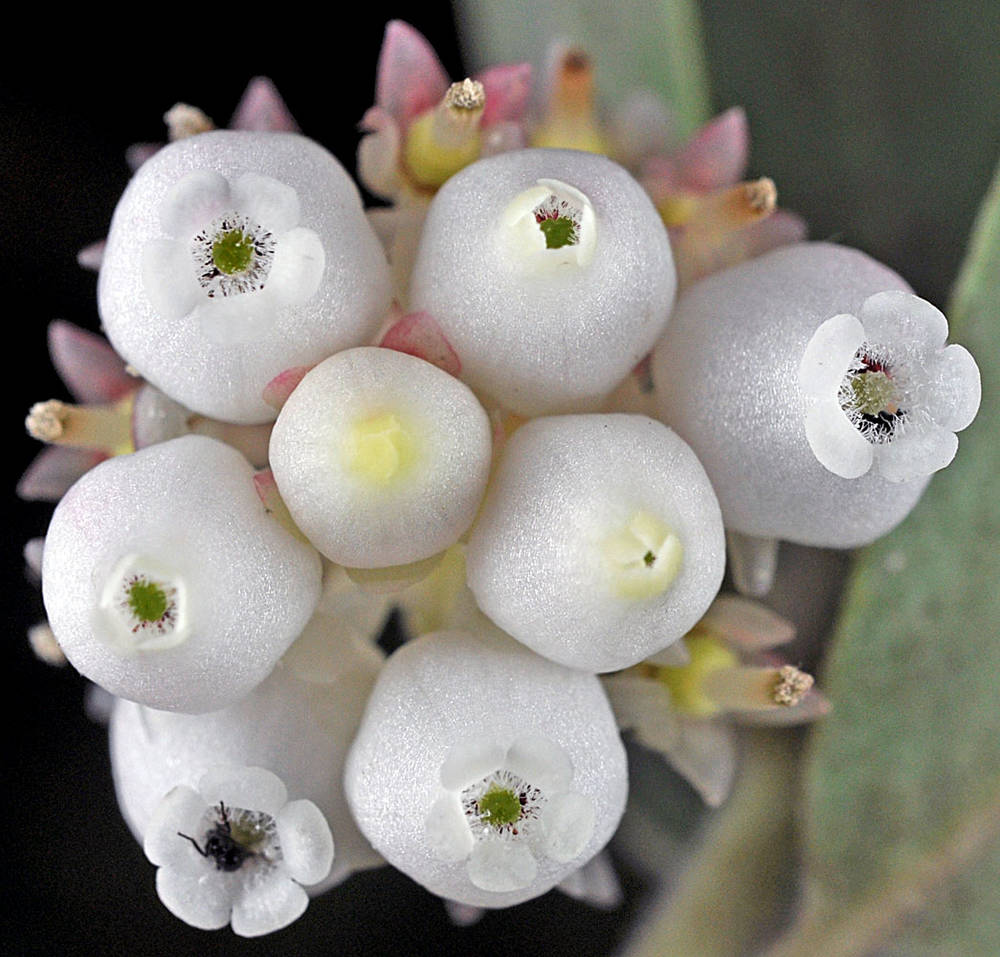Arctostaphylos morroensis
Arctostaphylos
manzanita
prostrate to erect, often contorted; much branched, rarely with a much enlarged root-crown (burl);
bark shiny brown to dark red or blackish; smooth, often flaky on branches.
alternate; simple, elliptic to lanceolate; ovate, or rounded; abaxial and adaxial surfaces similar; dull green or grayish, or adaxial surface brighter green, bases tapered to rounded or truncate;
margins entire;
tips acute, obtuse, or rounded;
petioles short;
stipules absent.
terminal; racemes or panicles, condensed or open; few- to many-flowered, bracteate throughout.
bisexual, regular, pedicelled, overwintering in bud;
sepals (4)5, connate at base;
corollas (4)5-merous; urn-shaped; < 11 mm wide, white or pink;
petals connate nearly their entire length, with short distinct, spreading or recurved lobes;
stamens (8)10, included in corolla; free;
filaments broadened and usually hairy at base;
anthers with curved awns, opening by terminal pores;
ovaries superior, glabrous or pubescent; compound, 2–10 chambered;
styles 1;
stigmas capitate, hypogynous disk present.
berry- or drupe-like, with 2–10 1-seeded nutlets, brown or red; fleshy, mealy, not warty.
or
evergreen.
Arctostaphylos morroensis
Arctostaphylos
Western North America (1 species circumpolar). ~60 species; 8 species treated in Flora.
This genus attains by far its greatest diversity in California, where 85 species and subspecies were recognized (Wells 1993) with even more added in recent years. This extreme proliferation of taxa is generally ascribed to interspecific hybridization followed by the stabilization of recombinant genetic types, often as small, morphologically distinct populations in unique habitats or isolated locations apart from the parental taxa. Our treatment follows a conservative approach, with several earlier recognized Oregon species being placed in synonymy or under various putative interspecific hybrid combinations. Included are two named hybrids of known parentage that, in our opinion, do not have distinct species status. Species identifications are well defined except in the Siskiyou Mountains region of southwestern Oregon, where co-occurring taxa frequently hybridize, especially in disturbed habitats, and key characteristics may recombine. Foliage pubescence traits are often best seen in young leaves, if available.
Kenton Chambers


